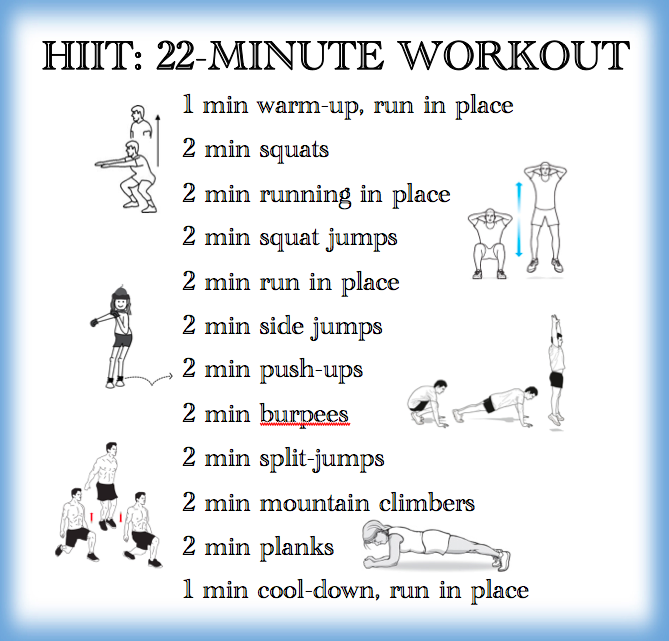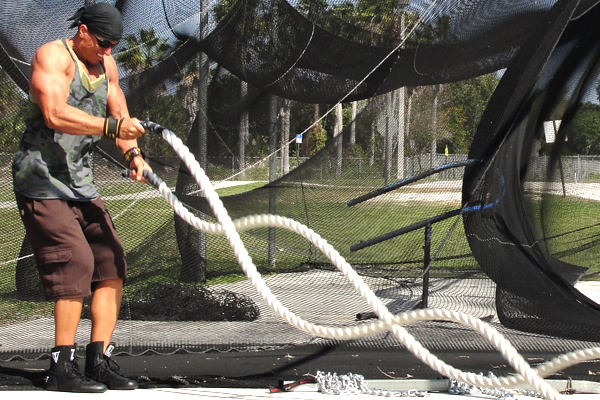Short interval training has short work periods followed by longer rest periods. Often the work to rest ratio is around 1:2 with the rest interval being twice as long and the work period. This method of training is, therefore, different from long interval training in that long interval training has larger work periods than rest intervals.
Today many people know short interval training by the buzz acronym “H.I.I.T.” High Intensity Interval Training. HIIT is a great acronym for understanding this training method, because this short interval training is done at high intensities, usually between 85-100% maximal workload, for short periods of time.
Exercises used during short interval training include: bike riding, rowing, running, cross-trainers, skipping, jumping, push-ups, etc. In fact just about any exercises that can be done at a high intensity for 10sec-3 min can be used. This is because it relies on the anaerobic energy systems during the work period and the aerobic system for recovery.
It is important during short interval training that the athlete achieve a good level of recovery before the next work period. This helps to ensure the work periods are maintained at high intensities.
Specific benefits of short interval training include:
- can focus on the alactacid or lactic acid energy systems
- focuses on improved recovery after high intensity work periods
- improves waste product removal speed
- increases in speed and power
These benefits are suited to many sports, but particularly replicate sports such as the rugby codes, where high intensity is often followed by short breaks before another high intensity action is required. Other sports that benefit include: netball, basketball, futsal, football, cricket (particularly batting) and tennis.

